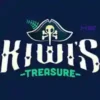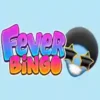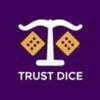You mentioned in a previous column that players should never make a hard way bet on a crap game. Why not? Norman G.
Hey, Norman, what is Mark Pilarski’s rule number one of casino gambling? (Actually, it’s rule number two as rule number one is: “Only bet what you can afford to lose.”) Rule number two of my gambling commandments is “Only make wagers that have less than a two percent house advantage.” Hard way bets are much, much higher and will gourmandize most of your hard-earned, hopefully disposable, income.
The true odds of a hard 6 or 8 materializing are 10 to 1, but your friendly casino is only going to pay you a paltry 9 to 1. This gives the casino a 9.09 percent edge. As for the hard 4 or 10, the true odds are 8 to 1, but the payoff is a measly 7 to 1, giving the casino a whopping 11.1 percent advantage.
My advice is to stick with a pass/come bet with odds or placing the six or eight.
My brother-in-law loves to play the “odd” bet on a roulette table. Recently in Las Vegas it came up 15 times in a row for him. What are the chances of that happening? Tony G.
You didn’t specify, Tony, if it was a double or a single zero roulette wheel. Because I advise my readers to play on only the latter, a single zero game, the odds would have been 50,000 to 1 of “odd” rolling 15 consecutive times. My personal all-time record when I dealt the game was 20 straight spins with black appearing. Odds: 1 in 1.8 million.
Every Thursday I take my great grandmother to a local bingo parlor. Seems this is the most enjoyable time we have together. She told me that she used to mark her bingo card with kernels of corn. I didn’t realize the game was that old. How old is bingo and where did it originate? Sally C.
Bingo’s beginnings, Sally, have never been truly authenticated, but the game was made popular by Edwin S. Lowe, a traveling salesman who accidentally chanced upon the game at a carnival in Atlanta in 1929.
You revealed, Sally, that your great grandmother used corn to mark her card; well, don’t forget to tell your bingo-bonding matriarch that the game was originally called Beano because it was played by covering the numbers with beans.
Is it legal to chart the rolls on a roulette table and then bet accordingly? Justin G.
According to what, Justin? Any attempts to impose numerical precision on a game that insists upon remaining imprecise is futile. It is permissible to “chart” the results of spins in an attempt to identify and exploit streaks, but because each spin is an independent event, no previous results have any bearing on what happens in the future.
You once wrote that no one has ever hit a solid 14 or 15 spot in Nevada. How about my unlucky 13-spot ticket. Anybody ever hit a solid 13 spot? Martha R.
Conclusively, I have no documentation one way or the other, and believe me, Martha, I’ve been searching. My guesstimate would be that no one ever has. But here’s a sobering thought that you can check out for yourself next time you’re in downtown Reno. At Fitzgeralds, take the escalator from the first to the second floor and you will find hanging on their wall of fame pictures of winning keno tickets through the 90s. The highest ticket hit so far this decade was a nine spot, and surprisingly, just one.
What does that tell you, Martha?




















